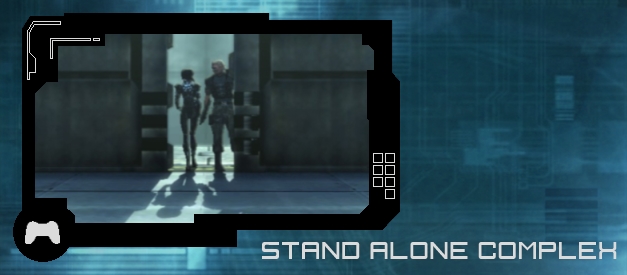
Worthy of the name Stand Alone Complex, the PS2 game based on the TV series with the same name contains a convoluted storyline that is difficult to follow with combat mixed in to prevent it from becoming a boring detective game. And seriously, the story in this game is so good that it could have been used as an additional story arc for the show to be used as a short OVA special or something. It's just a shame it's in a bland game with mediocre features.
Compared to the 1997 game which consists of great gameplay but weak on story elements, SAC flips it around by having a compelling storyline but lacking with superb gameplay. It's almost like they finished the game without giving it a second pass for polishing as the graphics look flat and controls aren't as tight as they should be, making for a frustrating gameplay experience.
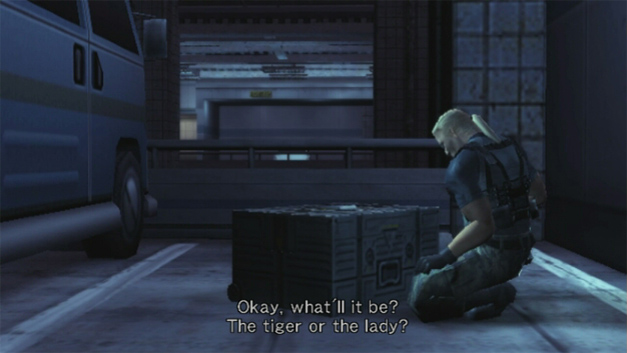
It's a third-person action game that has you playing as either Major Kusanagi or Batou. Each has their own unique specialties like Kusanagi's aerobatic martial arts skills while Batou is equipped with bigger and badder firearms. You can't choose which character to play as they are ties to specific missions, but the missions will be roughly half by playing the role of Kusanagi while the other half as Batou. The story is linear but it does allow you to go back and replay previous completed missions at any time.
It begins with an assignment where Section 9, requested by the military, needs to arrest a witness who's currently with a group conducting a weapons smuggling trade at Niihama's harbor. When Kusanagi catches up with the person in question, Takeru Fuwa, she witnesses him being brain hacked and killed via brain frying by an unknown assailant. When S9 later intercepts a delivery package Fuwa made days earlier, they find the cargo isn't what they expected it to be: rice. On top of that, Fuwa was said to be killed five years earlier while a working at a local University! To get to the bottom of this, it requires traveling to where Fuwa once lived in Norther Japan where he was part of an R&D team during the war. It's here where we uncover a secret that a terrorist group is on the verge of executing their master plan.
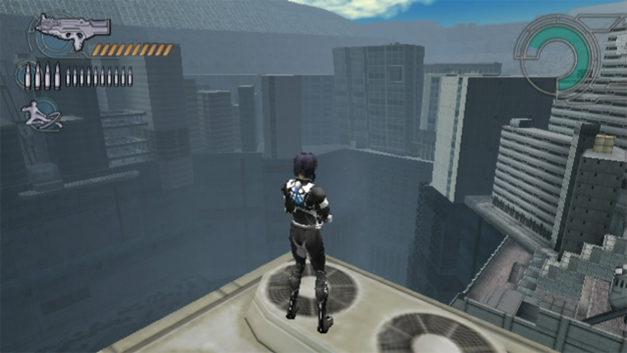
This area known as the Tohoku Autonomous Region is an interesting idea for a setting as it was used by the military during the world wars to evacuate their research scientists to for protection. It's a city hidden in the valley of an unused water reservoir with a dam acting as a south facing wall. A cloaking system is used to conceal the city to where the reservoir looks like is filled with water from above, but under the cloaking system you can see the sky without any visual interference, functioning like a one-way mirror. Narrow skyscrapers line the outer walls of the valley to where the roofs are shortly below the ridge of the dam so to stay under the visual barrier. The center valley is unobstructed where a training ground is located at the bottom of the dam, several hundred feet below the lobby floors of the skyscrapers. The training ground was for the military so they can conduct covert practice exercises without fear of satellites seeing what they're doing.
This gives a number of different areas to snoop around in for acquiring intel to get an answers to what's happening inside of the autonomous region. The story quickly gives individual points with you having to connect the dots. The interesting aspect of all of this is figuring out what smuggled weapons, rice, and a man who was listed dead five years earlier all relate to the case. To assist with Kusanagi and Batou at the region, the rest of the Section 9 crew digs up clues on the net to see who else may be involved, so throughout the game, cyber communication (cybercomm) will be primary way the story unfolds.
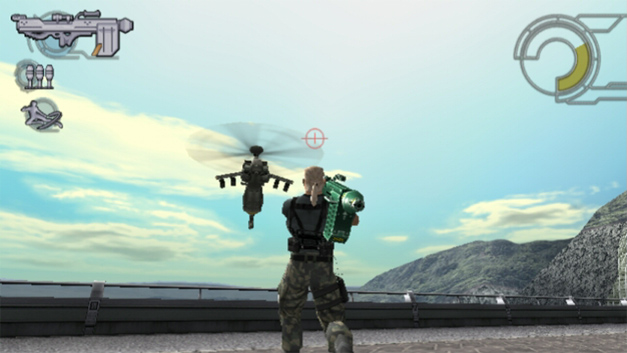
Graphically, the most impressive part is the vast, sweeping views of the autonomous region. Since it's based in a short, narrow, and a very deep valley, you can see all areas of the region from just about anywhere within. Throughout the game as you move from area to area you can see the buildings you were infiltrating from the previous mission, getting your bearings rather easily. People with acrophobia may want to skip this game as most of the levels are vertical, having you start at the top of a building and scale downward while jumping from structure to structure. Looking downward and seeing how high the towers are will make you want to stay away from the edge of the railings. So the game gets an 'A' for giving atmosphere. Unfortunately the devil's in the details; meaning, very little was applied to polishing up the graphics, giving it a 'D'.
Yup, for the most part everything is a-washed in grey, having a rather dull look due to all of the structures were constructed primarily with concrete. Sure, it's was once a military facility and it was built inside of an infrastructure for water management, but there should have been more set pieces within each mission that have some colors to it to minimize the color blandness. And when it comes to set pieces, there's a lot of it happening during the first mission, but it all goes away after that.
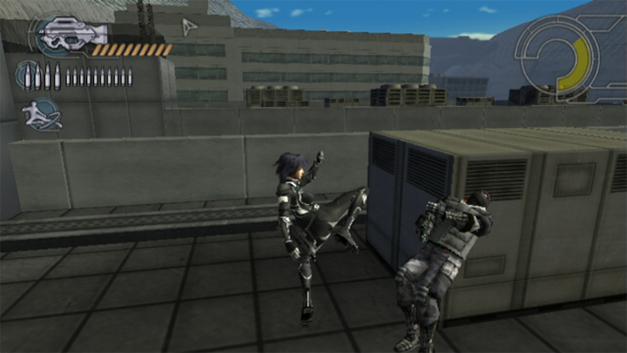
The game allows you to replay whatever mission you've completed at any time. This is great because you might need to replay one to get up to catch things you may have missed the first time when it comes to the story. Pre rendered cutscenes before and after each mission play a part in telling the story, but it's not everything. Cybercomm discussions will happen a lot in mission, but most of the time it occurs when you are in the middle of a battle, so it's hard to follow. Thankfully in the pause menu there's the ability to read the transmission logs over again; however the cybercomm discussions aren't enough as you will need to also read everything in the Terminology section in the pause menu to read letters and emails related to the case to understand where names and locations came from. Otherwise you'll be scratching your head wondering where the team got the name of the person they're looking for or how they decided to go to the autonomous region in the first place.
Controls aren't the best and they suffer from the pre Call of Duty 4 and Resident Evil 4 days of the PS2 era. You move the character with the left stick while control the camera with the right. The biggest problem dealing with controls has to be crouching which is used for crawling in tight spaces or for stealth; and while crouching you can't use your weapons. Since crouching is set for L3, you'll accidently go into this stance a lot when running around, especially during a battle. Another major issue is where this game commits the greatest sin of all for a 3D game: platforming. Holly poop will you be yelling at the screen a lot when you keep failing a mission because you can't jump the perfect distance or angle to land onto the next ledge, platform, or whatever gap you need cross to get to your next destination.
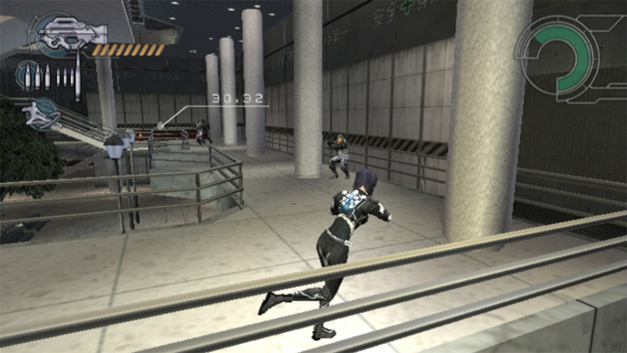
The soundtrack is ok. Good, but not great. It's comprised of a lot of synth with long organ notes hitting during the stealth scenes, giving for a lonely agent on a solo mission vibe. But after you get spotted and the area goes on alert, the track changes to a more faster passed beat that mostly goes into a drum and bass kind of sound. It's no Megatech Body CD., Ltd., but it fits the game well enough. The voice acting is excellent as it uses the voice actors for the TV series, acting as a bridge between the show and the game.
A cool idea that was poorly executed is the ability to ghost-hack an enemy soldier and control him for a short amount of time. The biggest advantage for ghost-hacking is having them take down soldiers in the surrounding area before you get there. The problem is initializing the ghost-hack itself which acts like a mini-game involving lining up rings within a time limit. The problem is the rings spin way too fast, making for a high barrier for achieving a ghost-hack. After failing for the fifth, tenth, TWENTIETH TIME, you'll consider whether it's worth it and just go in guns a-blazing. Most times you'll decide to go with the latter.

While a great story, the game itself has enough negatives associated with it to not recommend it, except to only the fans of the franchise or the TV series. With Production I.G assisting with the writing, you'd think they would have gone the extra mile to have animated the cutscenes with their own studio using 2D hand drawn animation like they did with the first game, making it like the "lost episode" of SAC, but instead decided to have the developers do it themselves. Although not a knock against the cutscenes as they look good, but it would have made this game way cooler if it were 2D animated.
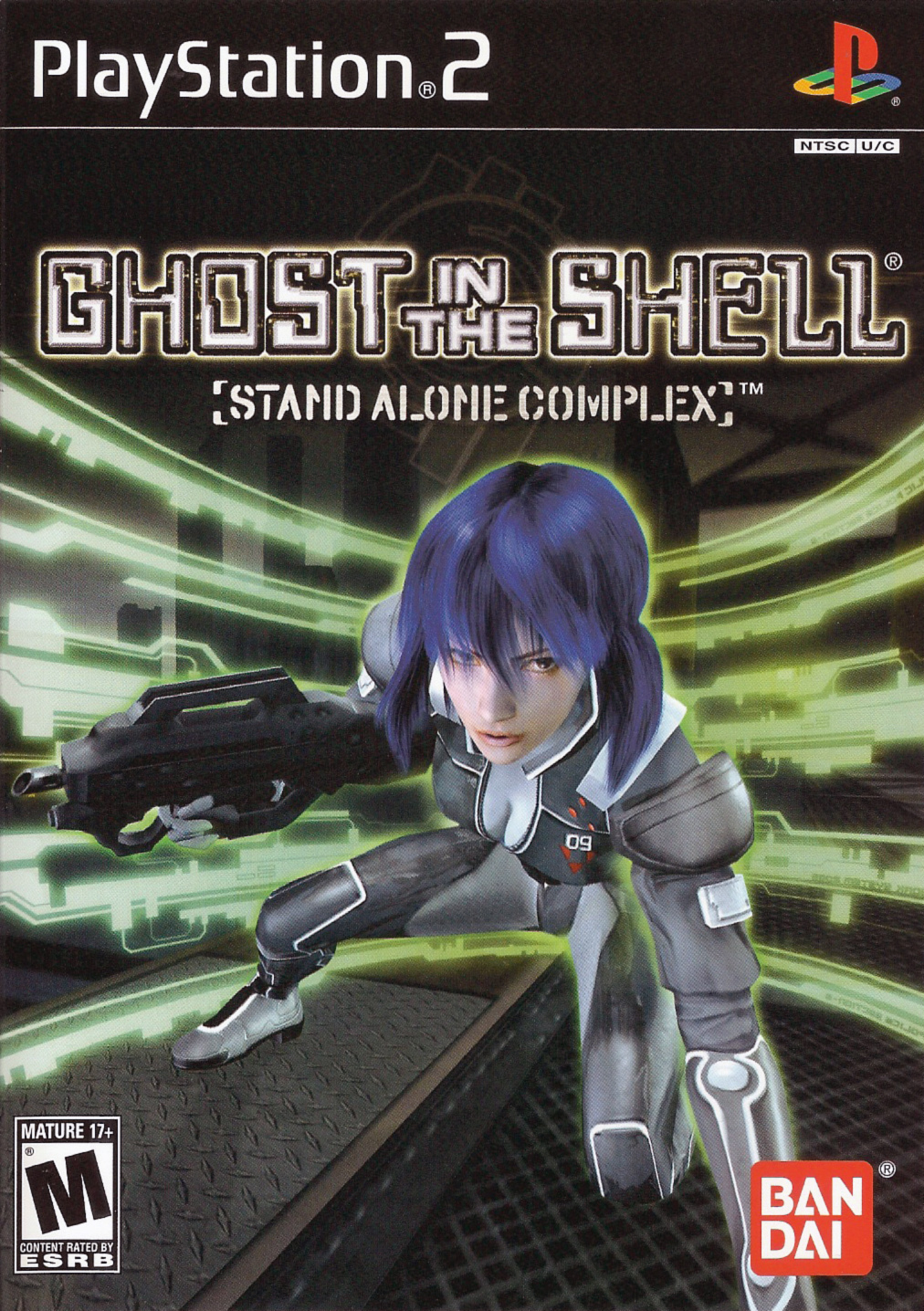 |
Ghost in the Shell: Stand Alone Complex
Developer: Cavia |
|
<< Innocence
|
Posted on: March 8, 2017
